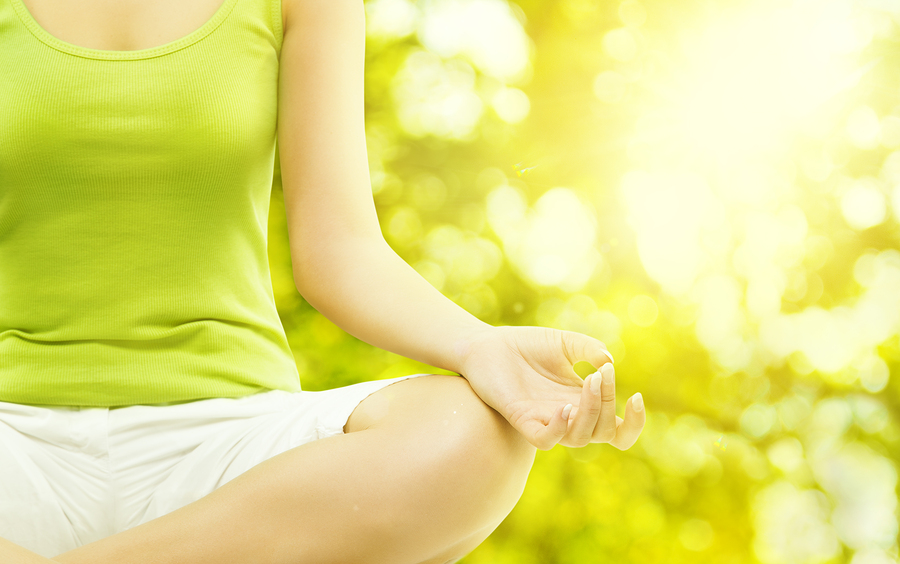3 breathing exercises to reduce stress, anxiety and a racing mind
It’s often said the most powerful tools for taking care of our wellbeing are the ones that already exist within us – and breathing is a prime example.
Breathing techniques feature in countless therapeutic forms and practices, from yoga, mindfulness and meditation, to self-help exercises for managing anxiety, insomnia and overwhelm. How we breathe can have profound physiological effects, triggering changes in our heart rate and brain chemistry and in turn our conscious state.
And it’s been catching on in the mainstream, particularly over this past year. According to Google, 2019 saw a 219% rise in searches for breathing apps – a trend that’s predicted to keep growing.
Even better news? Breathing exercises are something all of us can do for free, by ourselves, whenever and wherever we feel like it. There are lots of different techniques and approaches out there and they might not all be for you – if something isn’t working or doesn’t appeal, try something else.
Here, three breathing experts talk through some simple ways to give it a go…
1. To help tackle high-stress situations…
“When we are under pressure or in the midst of a high-stress situation, the breath naturally becomes fast and shallow, and more centred in the chest. This happens as a result of the body’s ‘fight or flight’ response, which is crucial in times of imminent danger, but not helpful in other everyday situations,” says Dominique Antiglio, a sophrologist at BeSophro clinics and author of The Life-Changing Power Of Sophrology (be-sophro.com).
“To relax the nervous system, use a technique called abdominal breathing to shift the breathing from your chest down to your tummy, where you can breathe more deeply, slowly and calmly. This in turn helps to relax your muscles and slow down any racing thoughts, so you can think more clearly. The next time you experience an intense or anxiety-inducing experience, engage this form of deep breathing and notice how much calmer and controlled you feel after only a few minutes.”
To do it, she suggests finding a seat if possible, although it can also be done standing up or lying down if needs. “Place one hand on your chest, the other on your tummy, and close your eyes. Breathe in and out naturally a few times to establish your rhythm and as you do so, notice the movement of your hands,” Antiglio adds. “Then, when you’re ready, imagine you have a balloon where your tummy is, and as you inhale, the balloon starts to inflate, then as you exhale, the balloon deflates.
“Count the length of your in-breath and breathe out to twice the length – so in for three counts and out for six. Repeat this process mindfully for two to three minutes and you will notice your breath naturally starts to shift from the chest to the tummy. You can also continue to do this for as long as you need in order to feel calm and re-centred again.”
2. If you’re curious about mindful meditation…
For yoga teacher and breathwork leader Sapphire Leena Brown, who runs group breathwork workshops across the UK and beyond (@sapphire.leena), breathing techniques are at the centre of her personal approach to wellness and working with clients.
For those curious about harnessing the breath in mindfulness meditation, she suggests giving this exercise by international lecturer, researcher and author Dr Joe Dispenza a go.
“Begin by sitting down, with your back straight, and start to focus on your breath. As you inhale, breathe in long and slow. During the ‘in’ breath, pull in your perineum (the muscles beneath your tailbone and pelvic floor), then your lower abdomen and finally your upper abdomen,” she explains. “Do all this while imagining that you are pulling up the ‘kundalini’ energy from your sacrum – like sucking it through a straw. When your lungs are full to the max, you pull in the perineum and the belly muscles even more. Squeeze and hold the breath here for as long as you can. Exhale and start all over again.”
She suggests starting with doing this for just three minutes then slowly building up as you become more “familiar and relaxed” with the technique.
3. If you’re prone to anxiety…
Joel Jelen, founder of Reset Breathing which runs workplace wellbeing workshops (resetbreathing.com), notes that hyperventilation, or over-breathing, is a big factor in anxiety. But this is something we can all benefit from keeping in mind, and Jelen says it’s not just the pace of your breathing that matters but also using your nose.
“The foundation of good health is to breathe slowly, through the nose only, silent – never take deep breaths, sigh or yawn with your mouth open,” he says. “In fact, breathe as often through your mouth as you eat through your nose! Mouth breathing when not exercising causes anxiety and puts us in a state of fight or flight.
Breathe gently, slowly, through the nose only, from the tummy, like a healthy baby #breathe #breath #BreathingOxygen #breathintreatment #breathwork #calm #relax #anxiety #mentalhealth #Liverpool #MondayVibes #MondayMotivation pic.twitter.com/AyVeE8YAfi
— Reset Mode (@resetbreathing) December 9, 2019
“A great way to reduce anxiety is to regularly employ a Buteyko (pronounces ‘boo-tay-ko’) breathing technique involving many small breath holds,” Jelen suggests. “Exhale through the nose, pinch your nose with fingers and thumb, breath hold for three to five seconds, resume breathing for 10 seconds, repeat for up to six repetitions. This can kill off panic attacks within 30 seconds. The key is to learn and commit to breathing techniques that enable you to breathe much slower and optimally – for example, during your sleep – that will set you up perfectly for the day.”
The Press Association
Latest posts by The Press Association (see all)
- Princess Charlotte set to celebrate ninth birthday - May 1, 2024
- How edible flowers can make your dishes look and taste divine - April 30, 2024
- Beauty entrepreneur Liz Earle on turning 60: Ageing is a gift - April 30, 2024
- Unseen photo of William and Kate’s wedding released to mark 13 years of marriage - April 29, 2024
- The Tattooist Of Auschwitz author Heather Morris on why now is the perfect time for a TV adaptation - April 29, 2024




















